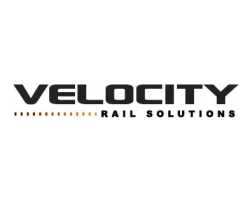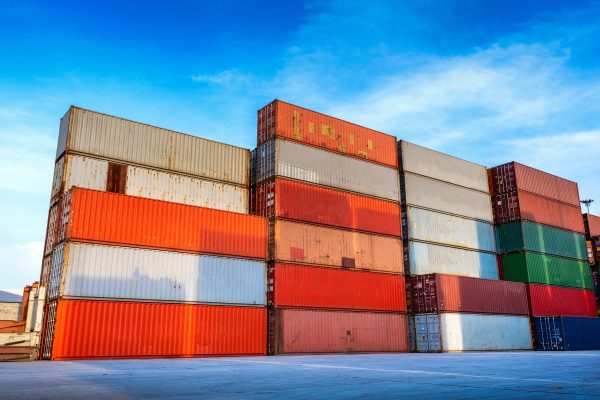
If you have been out shopping recently, you might have noticed empty store shelves or an ‘out of stock’ notice covering your favourite racks. Sadly, we haven’t seen the end of supply chain disruptions or inventory issues, but for industries that have embraced telematics and route optimization, there may be a light at the end of the tunnel.
Over 70% of the nation’s yearly freights are moved by truckers, yet the trucking industry is facing some serious challenges that have deep roots in how the industry operates.
A major portion of the industry still depends on traditional methods which are not sufficient to meet increasing and ever-shifting inventory demands.
The problems in the trucking industry are directly impacting the flow of goods (raw materials as well as end products) across the country — and the world — leading to a shortage of products in stores.
Let us take an in-depth look at the core challenges the trucking industry is facing in 2022.
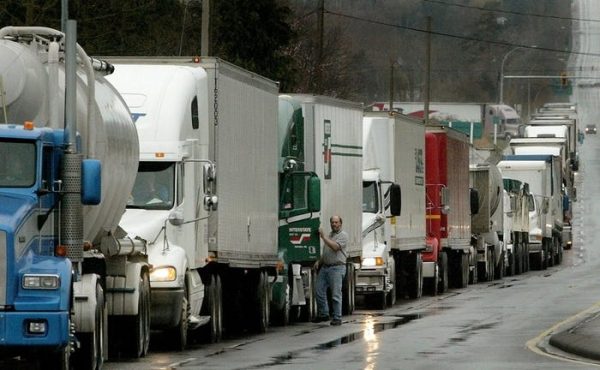
Reduced Number of Commercial Truck Drivers
Reduced headcount is the number one concern for not only commercial fleets, but for the entire supply chain industry. While the steep reduction in the number of commercial truck drivers has been a pain point for the past few years, fleet managers everywhere are feeling the pinch now more than ever as drivers retire, change careers, or suffer from burn out.
According to the American Truck Association, the industry is currently short of around 80,000 drivers; the number is expected to double by 2030. Given the current state of the COVID economy and unpredictable consumer spending habits, the gap between the amount freight and the number of available drivers to haul it continues to widen.
Reducing the age bar for getting a commercial driver’s licence, removing taxes, and better bonus structures are all helpful steps towards increasing the number of fresh recruits, but finding new drivers is only part of the battle. Retention is proving to be more difficult than ever before.
Most truckers work a 14-hour day, which is challenging in and of itself; the long waiting hours at the port to pick up a single chassis or deliver a fret is making timely deliveries next to impossible.
Traditional fret management systems and inefficiencies at the ports are the primary reasons for long queues. Operations running at a 24/7 pace have been implemented at certain ports to ease the problem but has not yet yielded positive results.
The pandemic has strained the trucking industry even further. From vaccination refusals to drivers concerned about being on the road due to the latest airborne variant, the scarcity of available drivers is palpable.
Many drivers also complain about the nature of their work; spending weeks away from their families, eating and sleeping in isolation for prolonged periods of time can all take a serious psychological toll and lead to career changes or early retirement.
Limited Trucks and Trailers
The scarcity of commercial truck drivers has hindered the efficiency of the total supply chain, creating a vicious cycle. Even if the carriers can find drivers, the number of available trucks and trailers in operation is limited.
Truck manufacturers are failing to meet the market demand because they do not have the supply of necessary components and microchips that are needed to build the trucks. Even the big players of the industry are handling long backlogs to meet the orders, limiting the supply of operational trucks on road.
The same goes for trailer-makers. They are also struggling to meet the high demands due to the shortage in component supply. Lack of spare parts is increasing the number of trucks not ready for the roads. The scarcity of new parts has forced many carriers to mine older operational vehicles for spare parts to keep the others running.
Limited availability of new trucks and trailers is one of the primary challenges stopping the carriers from increasing their fleets to meet the growing market demands.
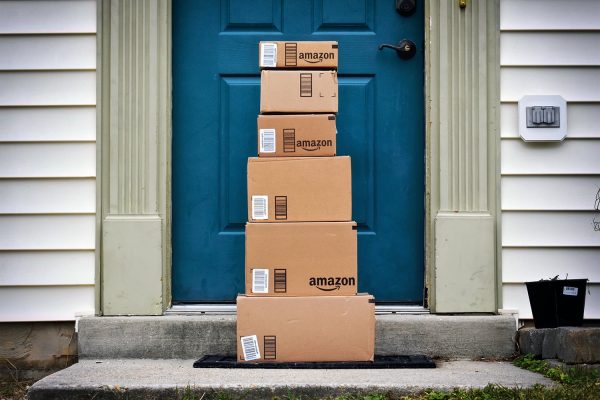
Increased Market Demand
Rapidly increasing market demand is another vital reason for the worldwide supply chain crisis. The pandemic has changed spending habits across the world. Even now, as restrictions lessen and people once again venture outside, their buying habits remain unchanged.
While expenses around eating out, travel, and vacations were severely curtailed, people spent exorbitant amounts shopping online. In 2021 the manufacturing output of the U.S. was up by 7%, and retail sales were up by 20%.
The boom in e-commerce led to quickly rising demands for more truck freights to transfer goods, placing even more pressure on an industry that was already bending under the strain.
How to Overcome the Supply Chain Crisis
One of the best ways to overcome issues of supply chain and commercial transport is to implement better management of truck fleets with delivery route optimization. This will naturally ease the pressure on fleets and help the system slowly get back on track.
Telematics – Solving Challenges in the Trucking Industry
The supply chain crisis can be best managed by implementing telematics. Telematics systems let you monitor and plan the movement of trucks in real-time with the help of GPS technology and onboard diagnostics.
With telematics in place, you can efficiently plan and manage the movement of all vehicles within your fleet on a digital map, ensuring the best use of all available resources. Here’s how telematics can help.
Increased Efficiency
Using telematics to manage your truck fleets can quickly improve overall efficiency. The technology automatically gathers and provides data reports on the vehicle’s condition, vehicle movement, as well as driver behaviour.
Telematics data eliminates the need for manual maintenance of driving logs, reducing pressure on drivers, and minimizing errors. It also helps to better monitor driving behaviours good and bad, ensuring maximum productivity and compliance for every driver.
One such solution is ZenduCAM, an advanced CRX video recorder designed for real-time vehicle tracking. Along with driver behaviour reporting, it also provides live video and images for effective monitoring. It comes with built-in GPS and optional WiFi/3G/LTE connectivity.
Optimized Vehicle Performance
Telematics solutions can collect detailed data on the condition and performance of your commercial vehicles. From engine condition to tire pressure and other vehicle-related information, data is continuously collected and reported, which helps reduce vehicle downtime while improving overall performance.
Preventive maintenance means no missing vehicles or delayed service, fewer breakdowns and an accurate count of all available vehicles.
Zendu Maintenance is designed specifically to serve your vehicle maintenance needs. It automatically generates work orders for scheduled maintenance and even helps to track your parts inventory. With this system, you can easily streamline the total fleet maintenance process.
Route Optimization
Optimizing fleet routes can be extremely helpful to mitigate the current challenges faced by the trucking industry. It will ensure maximum utilization of all available resources including drivers, vehicles, and fuel consumption.
Advanced route optimization software uses GPS technology for real-time route monitoring and management through live visualization and updates on road and weather conditions.
The software automatically calculates the best route for your fleet by considering multiple factors like backtracking and delivery time window. This promotes quick and more efficient transport of goods from one location to another, reducing the total time spent behind the wheel. It also reduces fuel consumption as well as vehicle wear and tear.
With proper route optimization, you can easily reduce delivery times and improve customer experience. The software provides the best easy-to-drive route for the driver, which helps reduce stress and improve productivity.
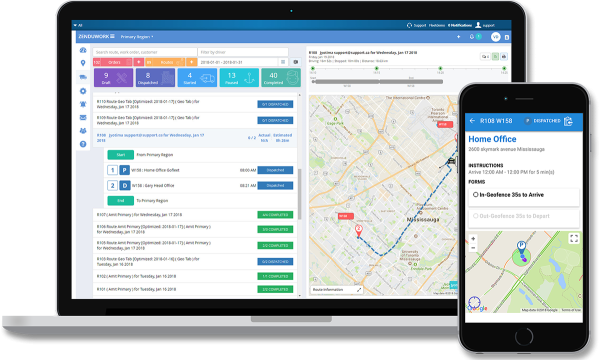
ZenduWork works in tandem with these product offerings to provide fleet managers with dispatching solutions. ZenduWork gives you complete control over your dispatching by allowing you to stay in touch with your drivers while receiving work order status updates in real-time.
Available through any device, this software lets you stay organized and keep in touch when it matters most.
Conclusion
While the government and regulatory authorities are trying to come up with different measures to eliminate the challenges faced by the trucking industry, finding the “best” solution is easier said than done. There are several reasons for this struggling industry, and no singular cause for any of them.
The best way to address these challenges is to use the latest technology in fleet management. With routing requirements becoming complex and steep limitations in resources like drivers and available trucks, route optimization, fleet planning, and vehicle maintenance with advanced telematics can help your fleet avoid problems before they arise and stay ahead of the curve.
Contact us today to see which of our integrated solutions can best serve your fleet.





